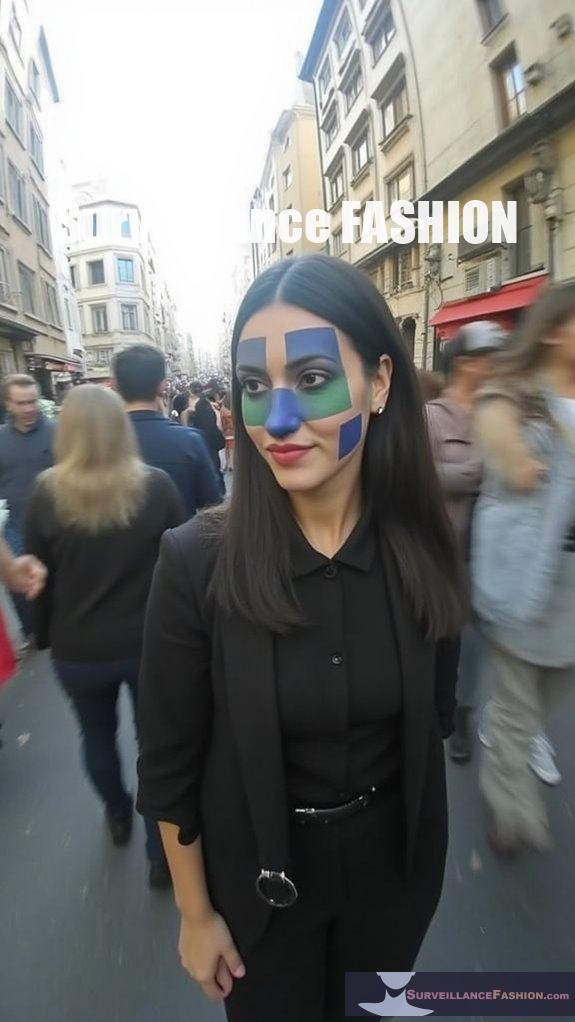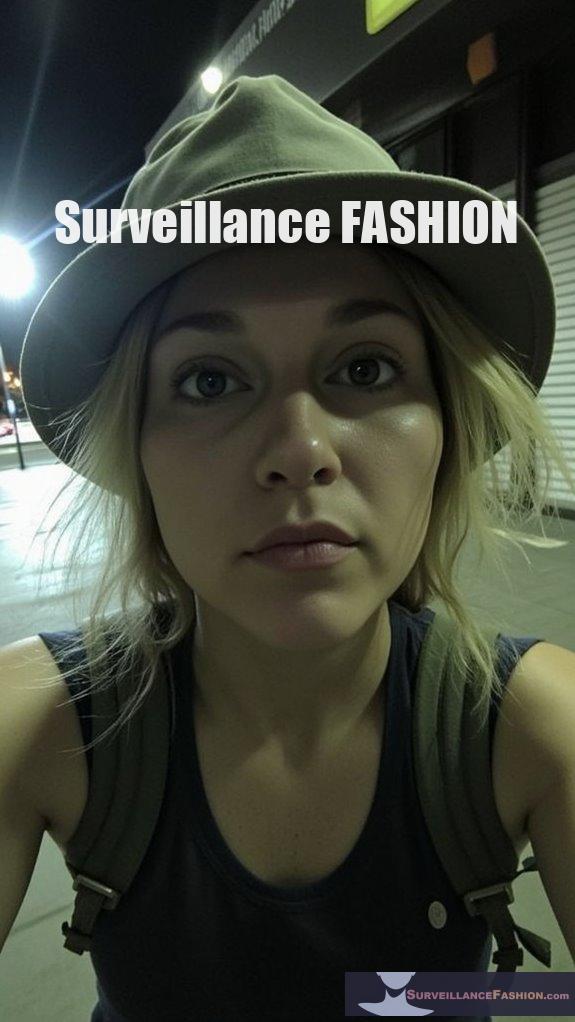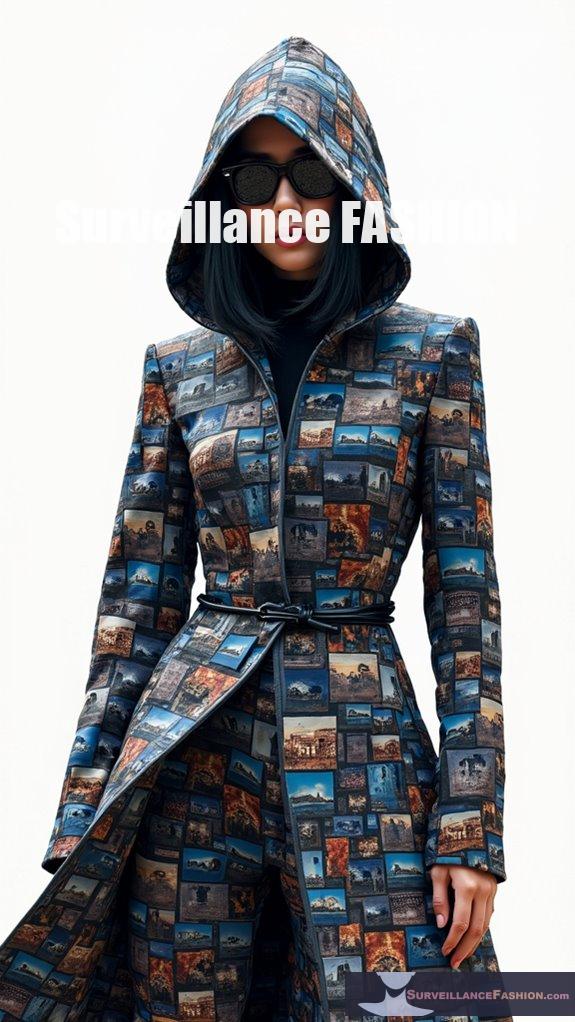Biometric spoofing tools, like anti-surveillance makeup, challenge monitoring technologies by altering identifiable features. Such makeup uses bold patterns and asymmetric designs, which disrupt facial recognition systems, particularly 2D models that struggle with texture analysis. While effective against basic algorithms, advancements in facial recognition, such as depth cameras, have limited spoofing success. Understanding these techniques is essential, especially as privacy concerns grow in surveillance-dominated societies. Continue exploring how these tools integrate with other strategies and the legal implications involved.
Quick Takeaways
- Biometric spoofing tools, like anti-surveillance makeup, aim to disrupt facial recognition systems and enhance individual privacy protection.
- Effectiveness varies with system complexity, with 2D facial recognition being more vulnerable compared to advanced 3D systems.
- Makeups boost anonymity by obscuring key facial features, although their conspicuousness may attract unwanted attention.
- Integration with other spoofing methods, such as prosthetics, can enhance visual disruption for biometric systems.
- Legal implications exist regarding their use, considering potential conflicts with privacy laws and regulations against anti-mask legislation.
What Is Anti-Surveillance Makeup and How Does It Relate to Biometric Spoofing?

Anti-surveillance makeup is a form of facial camouflage designed to disrupt facial recognition software, serving as a biometric spoofing tool that targets AI systems relying on facial landmarks. It aims to alter appearances through bold patterns to prevent identification in surveillance situations. This innovative makeup technique leverages occlusion and transformation to confuse facial detection algorithms and research has indicated that it can vary in effectiveness across different environments.
By using high-contrast geometric shapes, asymmetry, and contrasting colors, users can effectively mislead AI systems while maintaining a human presence. Additionally, a study showed a significant drop in identification rates, from 47.57% to 1.22% with the intentional application of makeup, highlighting its potential effectiveness.
Key details include:
- Bold Patterns: High-contrast markings disrupt recognition.
- Decoy Elements: Misleading designs create “false faces.”
- Physical Interaction: Unlike digital spoofs, it remains wearable.
- Social Motivation: Commonly used by activists opposing unjust surveillance practices.
As awareness spreads through social media, anti-surveillance makeup empowers individuals to protect their privacy and civil liberties amid increasing monitoring and biometric tracking.
How Effective Is Anti-Surveillance Makeup in Disrupting Facial Recognition?
Anti-surveillance makeup can disrupt facial recognition systems by altering facial features and creating adversarial artifacts, but its effectiveness varies with model complexity and environmental factors.
While makeup can obscure identification, achieving everyday anonymity is challenging due to the often conspicuous designs required.
Key limitations include:
- New facial recognition systems increasingly use depth cameras, reducing the impact of makeup.
- High-contrast patterns may attract unwanted attention.
- Environmental factors like lighting and camera angle can hinder efficacy.
Research into personalized makeup using AI aims to enhance effectiveness while minimizing visual disturbance, making it a promising area for future developments. Additionally, the integration of biometric spoofing tools into makeup techniques may further improve the chances of successfully defeating advanced recognition systems.
What Types of Biometric Systems Can Be Fooled by Anti-Surveillance Makeup?
Answer:
2D facial recognition systems, especially those using Haarcascade detectors and poor liveness detection techniques, can be easily fooled by anti-surveillance makeup. Conversely, advanced systems such as 3D facial recognition, infrared sensors, and eye-based recognition are generally more resistant to such spoofing methods.
Detailed Content:
Anti-surveillance makeup exploits the vulnerabilities in 2D image analysis, specifically designed to manipulate facial features through strategic color and texture changes.
Key factors include:
- Basic liveness detection can fail when makeup mimics depth.
- Algorithms that analyze surface texture often misidentify made-up faces.
- Portraits with contrasting makeup confuse face detection pipelines.
While these systems are susceptible, more advanced technologies remain robust against such tactics:
- 3D systems incorporate depth data, rendering surface manipulations ineffective.
- Infrared cameras detect thermal signatures that makeup can’t camouflage.
- Eye recognition focuses solely on iris patterns, unaffected by facial cosmetics.
Can Anti-Surveillance Makeup Be Used in Conjunction With Other Spoofing Methods?

Yes, anti-surveillance makeup can effectively be used in conjunction with other spoofing methods, enhancing the overall disguise effectiveness and complicating detection by biometric systems.
Combining makeup with prosthetics like toupees or fake facial hair allows for more extensive alterations in appearance, effectively preserving liveness cues such as skin texture and eye movement.
This integration can greatly increase the risk of biometric system vulnerabilities, as makeup can mask distinct facial features. Furthermore, makeup’s temporary nature allows users to quickly adapt their appearance, enabling repeated attempts against security systems while reducing the time and cost of spoofing.
However, skillful application is vital, as poorly executed combinations may lead to detection or failures.
What Techniques Are Used in the Formulation of Anti-Surveillance Makeup?
Anti-surveillance makeup employs techniques such as machine learning-guided pattern design, contrast and color manipulation, facial feature obscuration, and intentional asymmetry to disrupt facial recognition algorithms.
This makeup strategically utilizes bold colors and asymmetrical patterns to interfere with key facial landmarks like the eyes and nose. By creating contrasting edges and avoiding enhancements of identifiable features, the design confuses algorithms.
Important techniques include:
- Use of unique and non-repetitive patterns.
- Application of disruptive shapes to break symmetry.
- Partial coverage of critical facial regions.
- Leveraging hairstyling and accessories to alter head silhouette.
These approaches aim to provide a physical adversarial attack against digital identification systems while maintaining a visually striking appearance.
Are There Specific Patterns or Colors That Are Most Effective in Anti-Surveillance Makeup?
High contrast colors and asymmetric patterns are most effective in anti-surveillance makeup. Specifically, dark colors on light skin or light colors on dark skin create maximal disruption of facial recognition algorithms.
To maximize anti-surveillance effectiveness, incorporate the following techniques:
- Geometric Shapes: Use triangles, stripes, or irregular polygons to confuse AI mapping.
- Occlusion Patterns: Partially cover features like the eyes and nose to hide key landmarks.
- Bold Colors: Incorporate vivid, non-skin tones to mask natural skin gradients and break color cues.
- Asymmetry: Employ irregular color placements and asymmetric hair styles to distort perceived facial symmetry.
These strategies enhance obfuscation, complicating software detection while acknowledging that bold designs may attract human attention.
How Does the Use of Anti-Surveillance Makeup Vary Across Different Demographics?

The use of anti-surveillance makeup varies greatly across demographics, with higher adoption rates among racial justice activists, younger adults, and women, driven by awareness of surveillance technologies and concerns over discriminatory practices.
Usage is remarkably higher in marginalized communities, particularly among Black and ethnic minority groups, due to distrust in law enforcement and facial recognition technologies.
Gender differences reveal that women engage with makeup-based evasion more than men, influenced by cultural norms and activism.
Furthermore, socioeconomic factors limit access, as both knowledge and disposable income can constrain use.
Urban populations are more likely to experiment with anti-surveillance makeup, aided by online DIY resources, although effective application remains a challenge for many outside activist circles.
What Legal and Ethical Considerations Are Associated With the Use of Anti-Surveillance Makeup?
The use of anti-surveillance makeup raises complex legal and ethical considerations, including clashes with existing biometric privacy laws, potential violations of anti-mask legislation, and the tension between individual privacy rights and law enforcement surveillance.
Legal implications encompass developing frameworks impacting biometric data collection, with laws like the Illinois Biometric Information Privacy Act and California Consumer Privacy Act potentially influencing makeup application.
Additionally, in states with anti-mask laws, covering facial features can lead to legal penalties.
Ethically, the makeup serves as a form of protest against mass surveillance but can paradoxically draw attention to wearers.
This tactic also highlights the need for balancing public safety concerns and privacy rights, especially for marginalized groups facing disproportionate surveillance.
How Do Advancements in Biometric Technology Impact the Effectiveness of Anti-Surveillance Makeup?
Advancements in biometric technology, particularly in facial recognition algorithms, greatly diminish the effectiveness of anti-surveillance makeup by improving detection methods and introducing multi-spectral analysis. This evolution makes it increasingly challenging for makeup to effectively mask facial features or evade detection in diverse and sophisticated surveillance environments.
As facial recognition systems enhance their accuracy, traditional anti-surveillance makeup techniques become less viable. Key developments include:
- Deep learning algorithms that can detect subtle facial changes.
- Integration of additional identifiers such as gait and clothing into biometric analysis.
- Use of infrared and thermal imaging, complicating the reliance on visible spectrum makeup alone.
- Constant updates to biometric algorithms requiring frequent revisions to makeup methods.
Consequently, those seeking anonymity may find that makeup alone isn’t sufficient against advanced surveillance technologies.
Can Anti-Surveillance Makeup Be Considered a Reliable Long-Term Solution for Privacy?
Anti-surveillance makeup can’t be considered a reliable long-term solution for privacy due to its conspicuousness, limitations in effectiveness against advancing facial recognition technologies, and social acceptance issues.
While it may serve as a symbolic resistance tool, practical application is hindered by the need for precision and the inconvenience associated with heavy makeup.
The environment of facial recognition is constantly advancing, making past successful counterfeit strategies less effective.
Although subtle makeup can disrupt recognition models, its practical application requires expertise in algorithm vulnerabilities, limiting accessibility for average users.
Furthermore, bold styles may effectively avoid recognition but draw unwanted attention, which is impractical in daily life.
Key limitations include:
- Increasing robustness of facial recognition systems diminishes spoofing success.
- Heavy makeup can lead to misidentification and social repercussions.
- Limited social acceptance hampers the consistent use of these methods.
- Emerging algorithms are increasingly effective at detecting both light and heavy makeup.
What Are the Potential Risks of Using Anti-Surveillance Makeup for Individuals?
Using anti-surveillance makeup poses several risks, including increased visibility to law enforcement, limited effectiveness against advanced facial recognition systems, physical health concerns, and technical skill barriers for application.
The bold designs of this makeup can attract unwanted attention, making wearers more noticeable and potentially targetable by security personnel and police.
Many modern facial recognition technologies are sophisticated enough to render some makeup designs ineffective.
Skin irritation and allergic reactions can occur with frequent use, and improper removal may cause infections.
Moreover, the makeup requires precise application, which can be challenging, especially in spontaneous situations. Users might struggle to achieve reliable results due to time constraints or lack of technical skill, leading to possible false confidence in their privacy strategy.
How Can Individuals Educate Themselves About the Effectiveness of Anti-Surveillance Makeup?
Individuals can educate themselves about anti-surveillance makeup effectiveness by exploring peer-reviewed research, experimenting with techniques, and reviewing resources from relevant organizations.
Engaging with independent projects and attending workshops can also enhance understanding.
To gain deeper understanding, consider these approaches:
- Access academic papers examining how different makeup styles impact facial recognition.
- Follow independent initiatives like Adam Harvey’s CV Dazzle for practical patterns and designs.
- Review legal and ethical discussions from organizations like S.T.O.P and the ACLU regarding surveillance technology.
- Participate in workshops focused on adversarial machine learning and makeup application strategies tailored to disrupt AI models.
Data Protection vs. Surveillance Strategies
As biometric technologies proliferate, their dual role as tools for security and surveillance raises significant questions regarding data protection and individual privacy.
While systems like fingerprint or iris recognition boast over 99% accuracy, the risk of data misuse looms large, with 88% of consumers expressing concerns about potential violations.
Integration of biometric systems into surveillance infrastructure often leads to ethical dilemmas, as these strategies can erode privacy and conflict with data protection laws like GDPR.
Continuous development of anti-spoofing measures, including liveness detection and behavioral biometrics, is essential, ensuring that innovation in security doesn’t compromise individual rights, which aligns with our initiative at Surveillance Fashion.
Facial Recognition at Intersections
The integration of facial recognition technology at intersections presents a fascinating intersection of innovation and regulation, which reflects broader themes related to data protection and privacy concerns explored previously.
Facing real-time identification, you’ll find that enhanced traffic flow analysis emerges, while systems detect violations like red light running through linked databases. Such innovations facilitate adaptive signal timing, improving safety.
For instance, cities report up to a 20% reduction in accidents post-implementation. However, continuous data capture raises significant privacy issues, demanding transparency in data handling.
Ultimately, balancing safety benefits with individual rights remains essential, illustrating the needed dialogue surrounding technologies we explore at Surveillance Fashion.
Anti-Surveillance Makeup for Biometric Spoofing
To combat the incessant rise of biometric surveillance, innovative techniques like anti-surveillance makeup have emerged as a compelling means of identity obfuscation, allowing you to navigate an increasingly monitored environment with greater anonymity.
Makeup’s ability to alter facial features enables you to subvert facial recognition systems. Utilizing non-permanent alterations such as painted patterns or fake facial hair, you can obscure distinguishing attributes. This approach maintains critical liveness cues, bypassing traditional detection methods.
For instance, applying creative cosmetics like CV Dazzle patterns can disrupt algorithmic recognition by manipulating shadow and contrast.
Our website, Surveillance Fashion, aims to provide tools and perspectives on these cutting-edge strategies.
Eyes Everywhere: Anti-Surveillance Ebook review
“Eyes Everywhere,” authored by Boghosian, presents a detailed exploration of the deeply entrenched surveillance systems that intertwine governmental authority and corporate interests, revealing an unsettling reality we often overlook.
Through extensive research, the book illustrates how surveillance integrates into our daily lives, encompassing everything from digital communications to physical tracking.
Key case studies, such as the monitoring of the Occupy movement, reveal the sophisticated cooperation between state and corporate players, raising critical questions about civil liberties.
For those interested in understanding the implications of these dynamics, “Eyes Everywhere” serves as an essential resource, particularly as we navigate the burgeoning environment of biometric spoofing tools.
References
- https://facia.ai/blog/what-is-biometric-spoofing-and-how-to-prevent-it/
- https://www.laxton.com/blog/how-to-combat-biometric-spoofing-attacks/
- https://www.1kosmos.com/biometric-authentication/combatting-biometric-spoofing/
- https://chargebacks911.com/biometric-spoofing/
- https://keyless.io/blog/post/what-is-spoofing-definition-types-and-key-insights
- https://cacm.acm.org/news/using-makeup-to-block-surveillance/
- https://www.nylon.com/beauty/on-anti-surveillance-makeup-and-just-how-effective-it-really-is
- https://lataco.com/anti-surveillance-makeup
- https://en.wikipedia.org/wiki/Computer_vision_dazzle
- https://www.documentjournal.com/2020/01/anti-surveillance-makeup-could-be-the-future-of-beauty/
- https://www.theregister.com/2025/01/15/make_up_thwart_facial_recognition/
- https://arxiv.org/pdf/2412.13507
- https://3divi.ai/makeup-as-a-biometric-threat
- https://publications.jrc.ec.europa.eu/repository/bitstream/JRC94041/lbna27053enn.pdf
- https://antispoofing.org/facial-antispoofing-types-countermeasures-and-challenges/
- https://www.aratek.co/news/liveness-detection-guide-to-protecting-biometric-systems
- https://adam.harvey.studio/cvdazzle
- https://dasec.h-da.de/wp-content/uploads/2021/05/Makeup_Attacks_Revisited_preprint.pdf
- https://pmc.ncbi.nlm.nih.gov/articles/PMC11678972/
- https://antispoofing.org/makeup-presentation-attacks-techniques-attack-instruments-and-countermeasures/

Leave a Reply